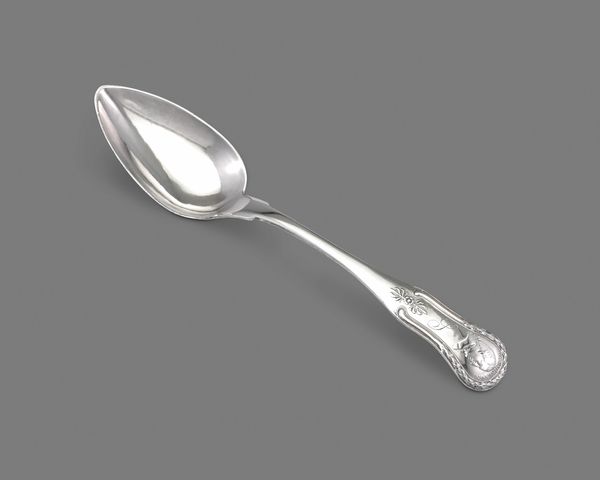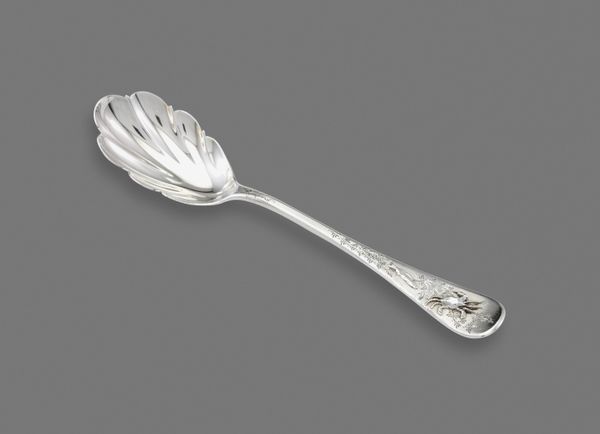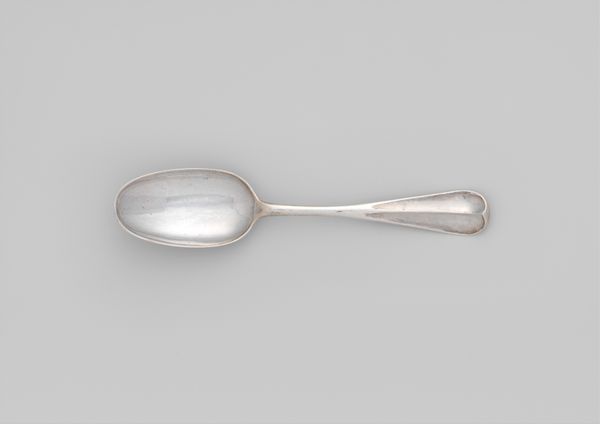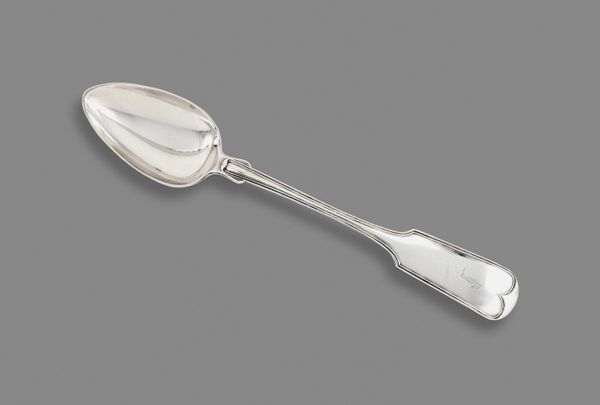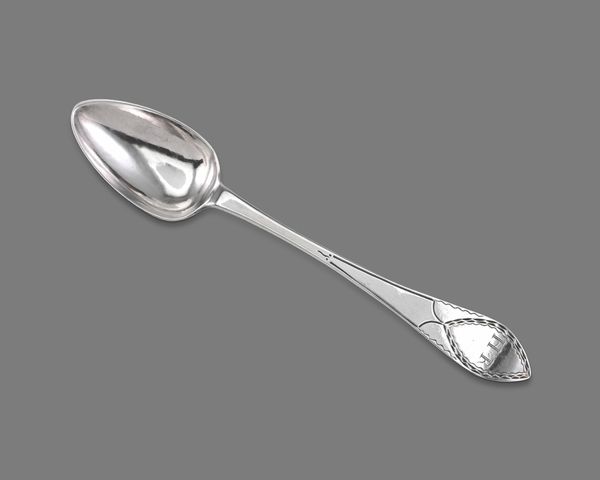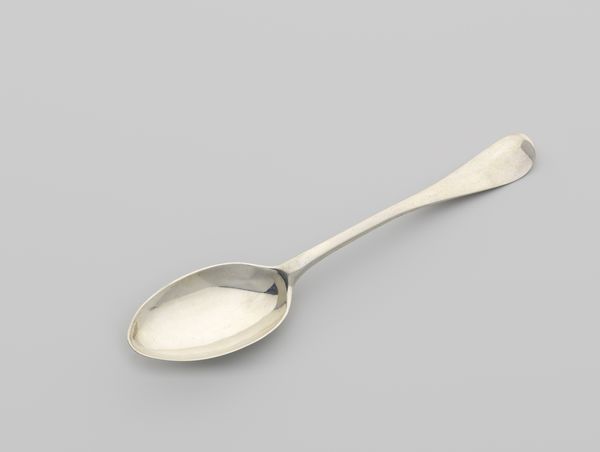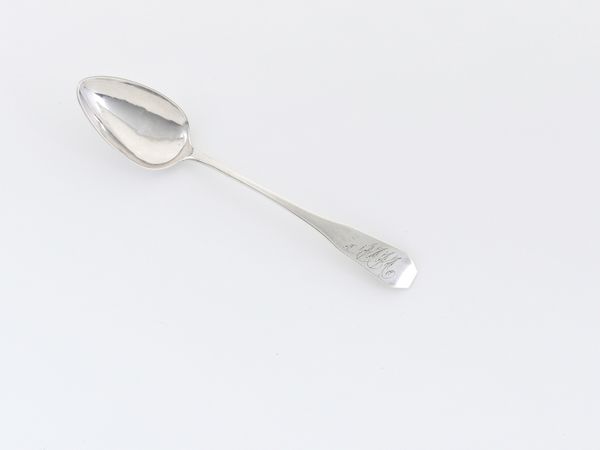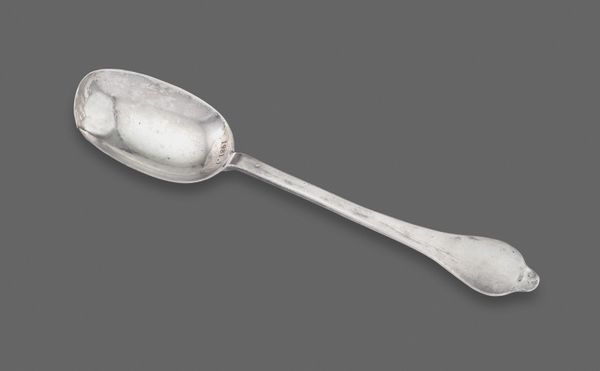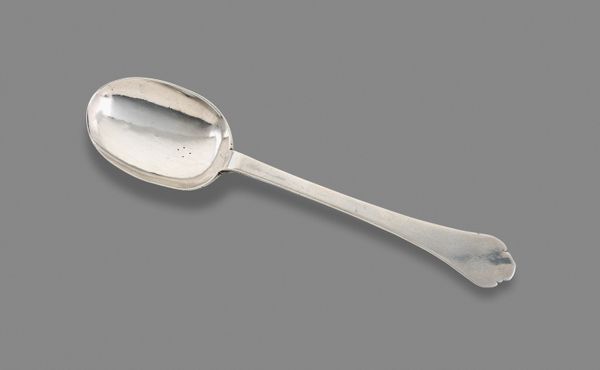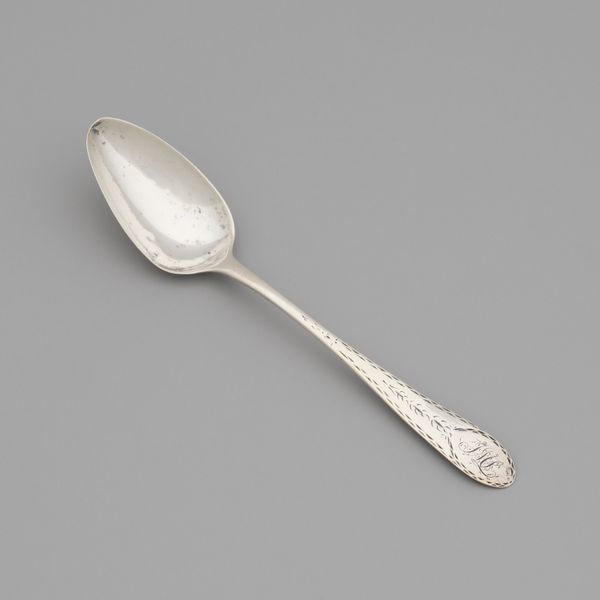
silver, metal
#
silver
#
metal
#
decorative-art
Dimensions: Each: 12.4 × 2.5 cm (4 7/8 × 15/16 in.)
Copyright: Public Domain
Curator: Here we have a fascinating pair of coffee spoons, crafted sometime between 1790 and 1812. The material is silver, and although the creator is unknown, the level of detail suggests a master artisan. Editor: They strike me as rather austere. Almost clinical in their simplicity, despite being crafted from such a luxurious material. Curator: I see them more as refined, embodying Neoclassical ideals. Think about the symbolism—the careful balance, the restrained ornamentation… it reflects an era that valued reason and order, doesn't it? Editor: Perhaps. But it's also crucial to acknowledge that the refinement of silver tableware coincided with colonial exploitation. The silver mines, the plantations where coffee was grown—all fueled by the brutal exploitation of enslaved peoples. Luxury for some came at an unimaginable cost. Curator: It's true; material culture often bears uncomfortable truths. Look closer at the engravings. Those motifs— tiny rosettes and stylized leaf patterns—speak to broader symbolic language. Flowers often represent ephemerality and delicate beauty, a fleeting joy contained within the ritual of drinking coffee. Editor: A ritual, yes, but also a privilege. Who had the time and means to slowly savor coffee, while others toiled? Silverware served to mark distinct economic strata. These spoons are quiet signals of the power held within domestic settings. Curator: The ubiquity of these symbols speaks to more universal desires, perhaps. The desire to bring nature and beauty into one's home. Those stylized rosettes were replicated everywhere, on porcelain, furniture...it wasn't solely about marking economic status. Editor: Agreed. However, objects of beauty become powerful artifacts that subtly normalize those social and economic power structures that shape us all. Curator: Thank you, this makes one reconsider the hidden context behind these spoons. Editor: And it brings up many considerations to sit with and observe the symbolic, material culture as the product of colonial history.
Comments
No comments
Be the first to comment and join the conversation on the ultimate creative platform.

